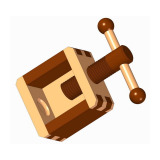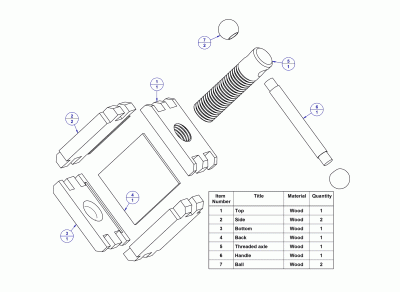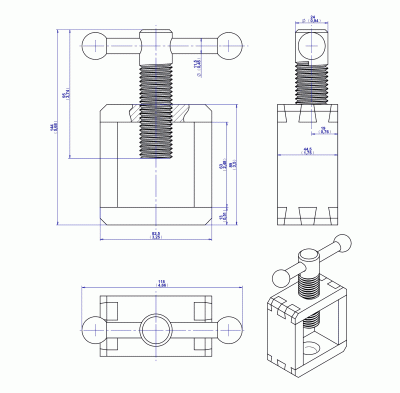With the free woodworking plan that you can download on this page you can make a Decorative wooden nutcracker, a perfect craft fair item to sell.
There are not many kitchen tools that aroused imagination of artists and inspired collectors in the way the nutcracker did. From a simple tool used to crack nuts, made of two pieces of wood fastened together by a leather strap, Nutcrackers turned into the fascinating art industry item. Very popular are those nutcrackers made in the form of various figurines like kings, soldiers, policemen, royal and church figures, as well as other persons with similar vocations, or the animal figurines. Creation of the carved wooden nutcrackers dates back to the 15th Century. In 18th Century production of the nutcrackers in the form of figurines has undergone an expansion and since then they had developed quite a rich history. In the beginning they were figurines with a big mouth and teeth and one could insert a nut inside and crack it by a mechanism for closing the mouth. Later, the functionality of figurines was pushed into the background and modern nutcrackers of today have mainly decorative function. Production of these figurines is so refined and the imagination of artisans unlimited, so these products are countless. An important contribution to development of the artistic approach in the production of nutcrackers was made by European manufacturers from Austria, Czech Republic, Poland, Italy and Switzerland, France and England, but a special place among them have manufacturers from the Saxony region of Germany, whose figurines are very famous. For a long time these figurines were hand-made in a small series and their industrial production has began only within the last few decades.

W 118mm (4.66'') x L 44.5mm (1.75mm) x H 144mm (5.68'') - Variable
The beauty and popularity of the nutcrackers are proven by the fact that there are many collectors of these figurines, there were printed stamp series with Nutcrackers motives and there are even Museums with the nutcrackers as the main exhibit items! Today, the wooden nutcracker doll is one of the symbols of the holiday season, while nuts are traditionally used as New Year’s decorations and holiday treats.
Wooden nutcracker plan that we recommend you here is of course not designed like the famous decorative figurines, but it is a plan for fully functional kitchen utensil and you could crack various types of nuts with it. It is designed to keep shell of nuts inside the nutcracker body during the cracking, while the control of the hand pressure on the nut shell and wide base of the threaded axle (with which the cracking is done) ensures that nut meat remains whole. This simple but very beautiful nutcracker designed in retro-style you can make with just a little effort and with simple tools. Of course, you can enhance its aesthetic value with combination of light and dark wood or by painting it. Traditionally, the wooden nutcrackers were made out of boxwood, but you can use birch or some other kind of local hardwood suitable for the kitchen utensils production as well.


In the construction the dovetail woodworking joints were used, because they provide assembly with very high rigidity and are very beautiful decorative elements, also great exercise for the beginner’s in woodworking joint hand-making. Strength of joints in this assembly is very important because during the nut cracking the wooden shells give strong resistance force, so any insufficiently strong joint would be quickly damaged.
You can customize thread dimensions to the capability of the thread cutting tools that are at your disposal, but we recommend that the dimension do not differ much from those we specified here.
We do not recommend usage of the synthetic paints and coatings for the objects that are in direct contact with food. You can leave wood in natural state, or you can treat it with some of the natural food safe finish like bees wax. Maintain it by whipping with a damp cloth. If necessary, hand-wash it in a warm water with mild detergent and dry it thoroughly. Do not dip it into water and never wash it in dishwasher, because the wood will crack.